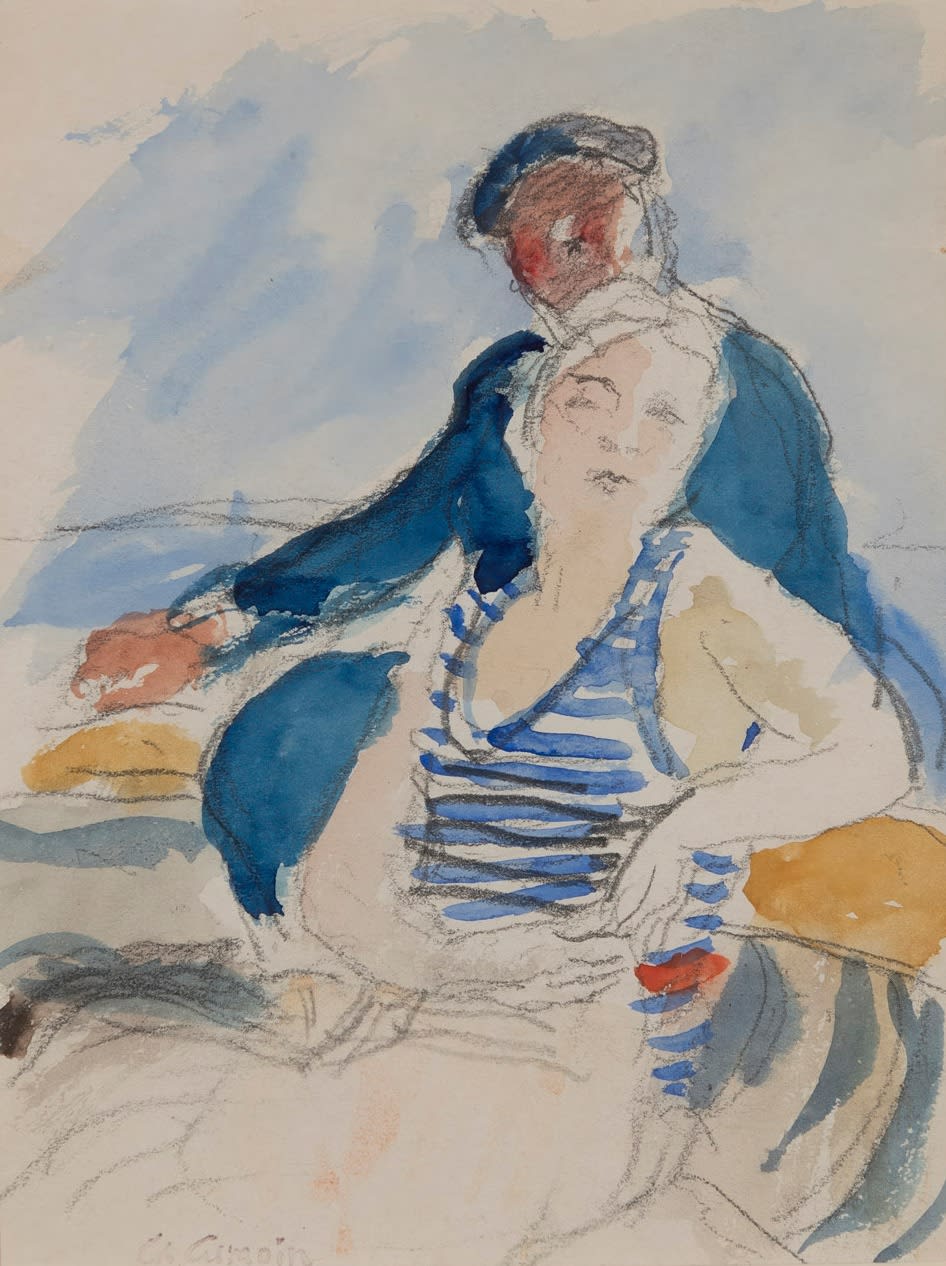Charles Camoin
Promenade en barque, 1932
Watercolour and pencil on paper
6 x 5 in, 17.2 x 12.6 cm
Stamped signature ‘Ch Camoin’ lower left
Sold
Born in Marseille in 1879, the son of a paint manufacturer, Camoin moved to Paris at the age of seventeen to study at the atelier of Gustave Moreau. It was...
Born in Marseille in 1879, the son of a paint manufacturer, Camoin moved to Paris at the age of seventeen to study at the atelier of Gustave Moreau. It was here that he met fellow students Albert Marquet, Henri Matisse and Henri Manguin, with whom he became life-long friends. Under Moreau’s instruction, his students developed an interest in exploring the potential of vivid colour and expressionist compositions. Together, the group formed the notorious ‘Cages aux Fauves’ Salon in 1905, earning the name ‘Fauves’ (wild beasts) due to their intense colours and gestural brushstrokes.
Camoin’s work was heavily influenced by his numerous sojourns around the French Riviera with Marquet and Matisse where, inspired by a 1918 visit to Renoir’s workshop in Cagnes, they would often set up their easels by the sea to paint luminous landscapes en plein air. Like his fellow Fauves, he was attracted to the golden light and the glittering landscape of the Côte D’Azur, yet Camoin’s brand of Fauvism was also shaped by his admiration for Cezanne and Renoir.
The artist masterfully linked the simplicity of composition and fluidity of touch of the former with the latter’s soft voluptuousness. His use of strong colours is particularly evident in the present work, where the intense blue is accented by touches of reds and yellows in a spontaneous and lively composition. The artist said of himself: “My instinct tells me how to find colours that sing. The forms are enfolded by air and light, but colour is what creates them." He continued, “My palette is my music; I have no technique, I have feelings.”
Camoin’s work can be viewed in collections of major institutions including as the Centre Pompidou in Paris, the Museum of Modern Art in New York and the Art Institute of Chicago.
Camoin’s work was heavily influenced by his numerous sojourns around the French Riviera with Marquet and Matisse where, inspired by a 1918 visit to Renoir’s workshop in Cagnes, they would often set up their easels by the sea to paint luminous landscapes en plein air. Like his fellow Fauves, he was attracted to the golden light and the glittering landscape of the Côte D’Azur, yet Camoin’s brand of Fauvism was also shaped by his admiration for Cezanne and Renoir.
The artist masterfully linked the simplicity of composition and fluidity of touch of the former with the latter’s soft voluptuousness. His use of strong colours is particularly evident in the present work, where the intense blue is accented by touches of reds and yellows in a spontaneous and lively composition. The artist said of himself: “My instinct tells me how to find colours that sing. The forms are enfolded by air and light, but colour is what creates them." He continued, “My palette is my music; I have no technique, I have feelings.”
Camoin’s work can be viewed in collections of major institutions including as the Centre Pompidou in Paris, the Museum of Modern Art in New York and the Art Institute of Chicago.
Provenance
The artist's familyConnaught Brown, London (purchased from the above)
Private Collection (purchased from the above 28 September 1999)
Gorringes, Lewes, 21 October 2015, lot 1169
Connaught Brown, London (purchased from the above)
Private Collection, London (purchased from the above 14 December 2015)
